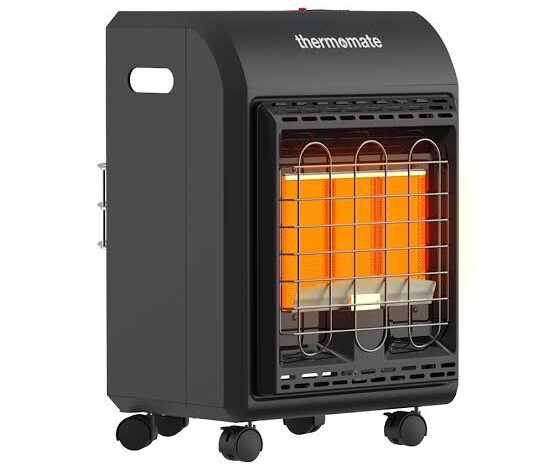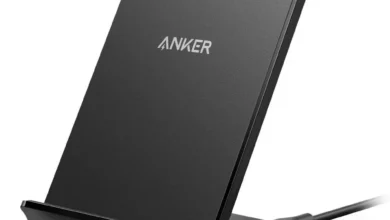
Introduction to Propane Heaters
Propane heaters are versatile appliances designed to create heat using propane gas as a fuel source. Propane, a byproduct of natural gas processing and crude oil refining, is commonly utilized in heating applications due to its efficiency and effectiveness. These heaters come in various configurations, including portable units, wall-mounted systems, and fixed installations, catering to a multitude of heating demands across residential, commercial, and outdoor settings.
The principle behind propane heaters is straightforward: they burn propane gas to generate warmth. The combustion process produces heat through a controlled flame, which is then dispersed into the surrounding area. Many models are equipped with safety features, such as automatic shutoff valves and oxygen depletion sensors, ensuring user safety during operation.
One of the primary benefits of utilizing propane as a fuel source is its high energy content relative to other fuels, which results in efficient heating. Propane heaters can produce more heat per unit compared to electricity or other fossil fuels, making them a preferred choice in areas where electricity costs are elevated. Additionally, propane is a clean-burning fuel, producing significantly fewer greenhouse gas emissions when burned, contributing to a reduced environmental impact.
These heaters have a wide range of applications. In residential settings, they are commonly used for heating spaces like basements, garages, and workshops. In commercial environments, propane heaters cater to businesses that require heating for their operations, enhancing comfort for employees and customers. Moreover, they are popular in outdoor spaces, providing warmth for patios, garages, and during camping activities. Overall, propane heaters offer a reliable and efficient heating solution suitable for diverse needs and locations.
Types of Propane Heaters
Propane heaters are a versatile and efficient choice for providing warmth in various environments. They can be broadly categorized into four main types: portable heaters, fixed heaters, infrared heaters, and convection heaters. Each type serves distinct purposes and is designed to meet specific heating needs.
Portable propane heaters are ideal for those who require flexibility. These heaters are lightweight and can be easily moved from one area to another, making them perfect for outdoor activities, camping, or as supplemental heat sources inside the home. Most portable models are compact and often feature built-in safety mechanisms, such as tip-over protection, which ensures that they operate safely in varied settings.
Fixed propane heaters, on the other hand, are permanently installed and provide consistent heating solutions for larger spaces. These heaters are commonly used in residential and commercial settings. They come in various forms, including wall-mounted and floor models, offering a range of capacities to suit different size requirements. Fixed heaters are usually more powerful than portable units, making them suitable for heating entire rooms or even entire buildings.
Infrared propane heaters work by emitting radiant heat that warms objects and people directly, rather than heating the air. This type of heating is highly efficient and is commonly used in outdoor patios, workshops, or garages, as it can effectively target specific areas without excessive heat loss. Infrared heaters are particularly advantageous in well-ventilated spaces, as they operate quietly and do not require the same level of air circulation as conventional heating systems.
Lastly, convection propane heaters circulate warm air throughout a space, making them suitable for larger areas where uniform heating is necessary. These heaters are characterized by their fans that distribute heated air, providing comfortable warmth in homes, offices, and industrial environments. Their efficiency and ability to maintain steady temperatures make them a popular choice among users.
Benefits of Using Propane Heaters
Propane heaters have gained popularity due to their numerous advantages compared to other heating systems. One of the primary benefits is energy efficiency. Propane heaters provide more heat per unit of fuel than electric heaters. This efficiency translates to lower operational costs, making propane a cost-effective choice, especially in regions where electricity prices are high. Many consumers have reported significant savings on their heating bills when switching from electric to propane heating systems.
In addition to cost savings, propane heaters offer a high degree of portability. Unlike traditional electric systems, which often require a fixed installation, propane heaters can easily be moved from one location to another. This flexibility is particularly beneficial for those who need temporary heating solutions, such as during outdoor events or in unoccupied spaces. Many propane heaters are designed to be lightweight and compact, further enhancing their usability.
From an environmental perspective, propane is considered a cleaner-burning fuel. When burned, it produces fewer greenhouse gases compared to other fossil fuels like oil and coal. Furthermore, propane is a non-toxic fuel that does not contaminate soil or groundwater, making it an environmentally responsible choice for heating needs. This eco-friendliness becomes increasingly important as more individuals and businesses seek to reduce their carbon footprints.
When comparing propane heaters to electric ones, one notable advantage is that propane can operate even during power outages, ensuring a reliable heat source. This is critical in areas prone to harsh winter conditions where electricity supply may be disrupted. Overall, propane heaters offer a combination of efficiency, cost-effectiveness, portability, and environmental benefits that make them a preferred choice for many consumers.
Safety Considerations for Propane Heaters
When utilizing propane heaters, attention to safety is critical to ensure safe operation and prevent potential hazards. One of the foremost concerns is proper ventilation. Propane heaters release combustion byproducts, including carbon monoxide, which is harmful in enclosed spaces. To mitigate risks, ensure that the area where the heater is used is well-ventilated. Installation practices should also prioritize safety; follow the manufacturer’s guidelines carefully, and consider hiring a qualified technician for the installation process. Proper positioning of the heater is essential to prevent any fire hazards. Maintain a clear space around the heater, avoiding any flammable materials that might come into contact with it.
Regular maintenance checks are vital for keeping propane heaters in optimal condition. Schedule routine inspections to assess the equipment and ensure all components are functioning correctly. This involves checking hoses for leaks, examining connections, and ensuring that valves operate safely. Addressing minor issues promptly can prevent them from escalating into dangerous situations. It’s also advisable to use propane appliances that have an automatic shut-off feature to further enhance safety.
Awareness of emergency procedures is equally important when using propane heaters. In case of a detected gas leak, it is paramount to turn off the propane supply immediately and vacate the premises. Notify local emergency services and, if safe to do so, ventilate the area by opening windows and doors. Additionally, equipping your home with carbon monoxide detectors is a crucial safety measure. These detectors provide alerts in case of elevated carbon monoxide levels, offering peace of mind and enhancing the safety of your household.
Installation and Maintenance of Propane Heaters
Proper installation and maintenance of propane heaters are crucial for optimal performance and safety. When beginning the installation process, it is essential to read the manufacturer’s manual thoroughly. This document typically provides necessary specifications and guidelines tailored to your specific model. Firstly, determine a suitable location that is well-ventilated and away from flammable materials.
Once a location is selected, ensure that the propane supply line is properly installed, securely connected, and leak-free. Use a pipe wrench to tighten any connections, and test for gas leaks with soapy water. If you notice bubbles forming, this indicates a leak that needs immediate attention. Following connection, set up the heater according to the guidelines, including proper positioning and fuel connection.
After installation, regular maintenance is essential to ensure the heater operates efficiently and safely. Start by cleaning or replacing the air filters on a seasonal basis to prevent debris buildup that can obstruct airflow. Inspect the propane supply lines regularly for signs of wear or corrosion, as these can also pose safety hazards. Additionally, check for any rust or deterioration on the heater itself.
Fuel efficiency can significantly decline if the burner is not cleaned routinely. Accumulated dirt can impair the burner’s performance, leading to decreased heat output and increased propane consumption. Moreover, test the thermostat periodically to ensure the heater maintains the desired temperature effectively. Common issues such as inconsistent heating or failure to ignite can indicate problems with the ignition system or venting, which should be addressed promptly.
In conclusion, adhering to these installation guidelines and maintenance routines will help ensure a safe, efficient propane heater that meets your heating requirements. Regular inspections and proactive measures can extend the heater’s lifespan and enhance overall performance.
Choosing the Right Propane Heater for Your Needs
When selecting a propane heater, several important factors should be considered to ensure that you choose the most suitable unit for your specific requirements. The first aspect to evaluate is the heating capacity, typically measured in BTUs (British Thermal Units). This measurement indicates how much heat the heater can produce, and understanding the space you wish to heat is crucial. For example, a small room may only require a heater with a capacity of 10,000 to 20,000 BTUs, while larger areas or open spaces may necessitate 30,000 BTUs or more.
Next, consider the overall size and design of the propane heater. There are various types available, including portable, wall-mounted, and vent-free models. If you need a heater for temporary use in different locations, a portable model may be ideal. Conversely, for a more permanent heating solution in a designated area, a wall-mounted unit could be more appropriate. Evaluate the available space in your home or outdoor area, as well as any aesthetic preferences you may have.
Intended usage also plays a significant role in your decision-making process. Are you looking for a propane heater for indoor use, outdoor spaces, or both? Some models are specifically designed for outdoor heating, featuring built-in safety measures to prevent gas accumulation. Additionally, your budget will influence your choice. Propane heaters range in price from economical to high-end models, so it’s wise to compare features against costs to find the best value for your needs.
Lastly, consider where to purchase your propane heater. Local home improvement stores often carry reputable brands, and online marketplaces may offer wider selections and competitive pricing. Brands to consider include Mr. Heater, Dyna-Glo, and Camco, known for their safety features and efficient performance. By taking into account these key factors—heating capacity, size, intended use, and budget—you can confidently select the right propane heater that meets your needs while ensuring an efficient heating experience.
Comparing Propane Heaters with Other Heating Options
When considering various heating systems, propane heaters stand out as reliable alternatives to electric, natural gas, and kerosene heaters. Each option presents distinct advantages and limitations, influencing the decision-making of consumers based on their specific needs.
Propane heaters are generally praised for their efficiency. They typically provide rapid heating and can work effectively in large spaces. Unlike electric heaters, which can lead to higher energy bills during peak usage times, propane offers more cost-effective heating. Propane itself is often cheaper than electricity in many regions, providing users with significant long-term savings. Additionally, propane heaters have a lower greenhouse gas emission footprint compared to electric heaters powered by fossil fuels, making them a more environmentally friendly choice.
On the other hand, natural gas heaters are another popular option, particularly in areas with existing gas lines. Their installation tends to be more straightforward for homeowners. However, natural gas can be subject to price fluctuations, and while combustion is cleaner than some alternatives, it still emits greenhouse gases. Furthermore, maintenance considerations are crucial, as natural gas systems require regular inspections.
Kerosene heaters, while often portable and powerful, come with notable downsides. They relatively more expensive fuel and generate pollutants, requiring proper ventilation, which can complicate their usage in enclosed spaces. Convenience also plays a role; propane heaters can be easily connected to storage tanks and do not require frequent refueling like kerosene heaters.
In summary, the choice between propane heaters and other heating options such as electric, natural gas, and kerosene options depends largely on factors including cost efficiency, convenience, and environmental impact. By carefully evaluating these attributes, consumers can select the most suitable heating method for their needs.
Environmental Impact of Propane Heaters
As energy consumption continues to be a significant contributor to environmental issues, understanding the impact of various heating sources is crucial. Propane heaters present an intriguing option within the realm of heating technologies, particularly when considering their carbon footprint in comparison to other fossil fuels. Propane, a byproduct of natural gas processing and petroleum refining, is often perceived as a cleaner alternative to traditional heating fuels like oil and coal.
When evaluating the environmental concerns associated with propane heating, one cannot overlook its combustion emissions. Despite being a fossil fuel, propane emits significantly lower levels of greenhouse gases than its counterparts. For instance, it generates approximately 30% less carbon dioxide than heating oil and about 50% less than coal during combustion, positioning propane heaters as a more sustainable heating option. Moreover, propane produces negligible levels of sulfur dioxide and particulate matter, which are known contributors to air pollution.
Another aspect that enhances propane’s environmental credentials is advancements in propane technology. Recent innovations have led to the development of high-efficiency propane appliances that utilize advanced combustion techniques, ensuring a more complete burn. This progress translates into reduced emissions and higher energy efficiency, making the use of propane heating systems more environmentally friendly over time.
Additionally, propane is often viewed as a versatile energy source that can be used in various applications, from residential heating to powering vehicles, consequently reducing reliance on alternative fossil fuels. The utilization of propane in hybrid systems, integrating renewable sources like solar, can further diminish the overall carbon footprint by reducing the dependence on electricity generation, which may still rely on fossil fuels.
Conclusion: Making the Switch to Propane Heating
As we’ve explored throughout this guide, propane heating presents several advantages that make it a compelling choice for residential and commercial applications. From its remarkable efficiency to its safety features and versatility, propane heaters offer an effective solution for those seeking reliable warmth during colder months. It is essential to recognize that energy efficiency not only translates to reduced utility bills but also minimizes environmental impact, making propane a sustainable choice for conscientious consumers.
Safety is another paramount aspect of propane heaters. With appropriate installation and regular maintenance, these systems provide safe and effective heating while incorporating advanced safety mechanisms to prevent hazardous situations. The presence of an odorant in propane ensures that any leaks are easily detectable, offering an additional layer of security for users.
Moreover, the versatility of propane heating is noteworthy. Propane heaters can serve various functions, from space heaters in individual rooms to whole-home heating systems, catering to different property sizes and carbon footprints. This adaptability allows users to tailor their heating solutions precisely to their needs. Furthermore, propane can power appliances such as stoves, water heaters, and fireplaces, illustrating its multifaceted benefits beyond mere heating.
In light of these factors, individuals and business owners alike are encouraged to consider making the switch to propane heating. With its efficient performance, safety assurances, and broad applicability, propane presents an attractive option for those looking to optimize their heating systems. Transitioning to propane heating not only enhances comfort but also aligns with long-term goals for energy efficiency and sustainability. Adopting propane as a primary heating source could be a valuable decision for your environment and your budget.




